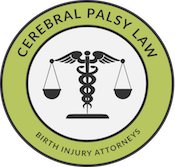Periventricular Leukomalacia (PVL)
Periventricular leukomalacia (PVL) is a dangerous neonatal brain injury involving the brain’s white matter. Most commonly occurring in premature babies, periventricular leukomalacia often results in lifelong brain damage, disabilities, and cerebral palsy (CP). In fact, nearly all babies with PVL are later diagnosed with cerebral palsy.
If your child suffers from cerebral palsy or another disabling condition as the result of periventricular leukomalacia (PVL), you may have grounds for a medical malpractice. Contact Michigan Cerebral Palsy Attorneys today and our birth injury team will answer your legal questions and provide you with a free case review. Call us toll-free at (888) 592-1857 or complete this online contact form for a free evaluation of your child’s cerebral palsy case.
What Is Periventricular Leukomalacia?
The human brain consists of both white matter and grey matter. The white matter is where communication happens in the brain—it is responsible for transmitting information and impulses between the body and the brain. The grey matter is where the brain finishes processing that information and where muscle control and sensory perceptions are located.
PVL occurs when a lack of oxygen or blood flow to the brain softens the brain tissue and kills the brain’s white matter. As a result, empty spaces in the brain develop in place of white matter and fill with fluid, causing spasticity and motor and intellectual impediments.
What Causes PVL?
Premature babies face the highest risk of developing PVL, but the following factors may also contribute to periventricular leukomalacia. It is the medical professionals’ responsibility to prevent or delay a premature birth to minimize the risk of PVL. Failing to do so, may be considered medical malpractice if the baby is left with a serious and permanent disability like cerebral palsy.
- Intrauterine infection: Infections (like chorioamnionitis) that doctors fail to diagnose or treat in the mother may travel through the amniotic fluid and into the baby’s brain, damaging the developing white matter.
- Hypoxic ischemic encephalopathy (HIE): HIE diminishes oxygen and blood flow to all parts of the brain, including the periventricular region’s white matter. For instance, failure of a physician to detect or alleviate conditions like fetal distress or low blood pressure could result in PVL.
- Damage to glial cells: Glial cells largely make up the brain’s white matter and support important neurons throughout the nervous system, so preexisting damage to these cells may serve as a precursor to PVL.
What Are the Risk Factors Associated with PVL?
- Premature birth: When intrauterine infections lead to the rupturing of the amniotic membranes, premature birth may occur.
- Premature rupture of membranes (PROM): The toxins released from intrauterine infections may transmit to the amniotic fluid and cause the membranes surrounding the fetus to break open prematurely.
- Hypoxic events during or soon after birth
- Hypocarbia or overventilation: A baby with PVL on a ventilator with incorrect settings may suffer lung damage or low carbon dioxide in the blood
- Brain bleeds
- Baby requires resuscitation after birth
- Respiratory distress in the baby
- Low blood pressure in the baby
What Are the Signs and Symptoms of Periventricular Leukomalacia?
Often there are no signs of PVL until at least eight weeks after birth. For many children, the following symptoms develop over time:
- Apnea (temporary pauses in breathing)
- Delayed motor development
- Vision problems
- Low heart rates
- Seizures
- Weakness or altered muscle tone, primarily in the lower extremities
How Is PVL Diagnosed and Treated?
Head imaging technologies like MRIs, CT scans, and cranial ultrasounds are used to diagnose infant PVL. While there is no cure for babies diagnosed with the condition, doctors should use the following precautions should to diminish the chances of PVL:
- Delaying or preventing premature birth should be the physician’s top priority in decreasing the likelihood of PVL or other birth injuries since it is the greatest risk factor for developing the condition.
- Doctors should take measures to prevent hypocarbia, hypoxia, and abnormal blood pressure in an infant.
- If HIE is detected after delivery, researchers have found that brain cooling the infant reduces chances of developing PVL.
Since there is no known cure for PVL, treatments are generally supportive and symptomatic once an infant is diagnosed with the condition.
Legal Help for Periventricular Leukomalacia (PVL) and Cerebral Palsy (CP)
Michigan Birth Injury Lawyers Making a Difference
Cerebral palsy and periventricular leukomalacia are difficult areas of law to pursue due to the complex nature of the injuries and the medical records that support them. Our Michigan birth injury lawyers are committed to securing the resources necessary to help your loved one rehabilitate from his or her birth injury and live a life of equal opportunity. Call Michigan Cerebral Palsy Attorneys at (888) 592-1857 or fill out this contact form online to learn if you have a case.
Sources
- “Brain Atlas.” Brain Explorer. N.p., n.d. Web. 10 Sept. 2014.
- “NINDS Periventricular Leukomalacia Information Page.” Periventricular Leukomalacia Information Page: National Institute of Neurological Disorders and Stroke (NINDS). N.p., n.d. Web. 10 Sept. 2014.
- “Periventricular Leukomalacia: MedlinePlus Medical Encyclopedia.” U.S National Library of Medicine. U.S. National Library of Medicine, n.d. Web. 10 Sept. 2014.
